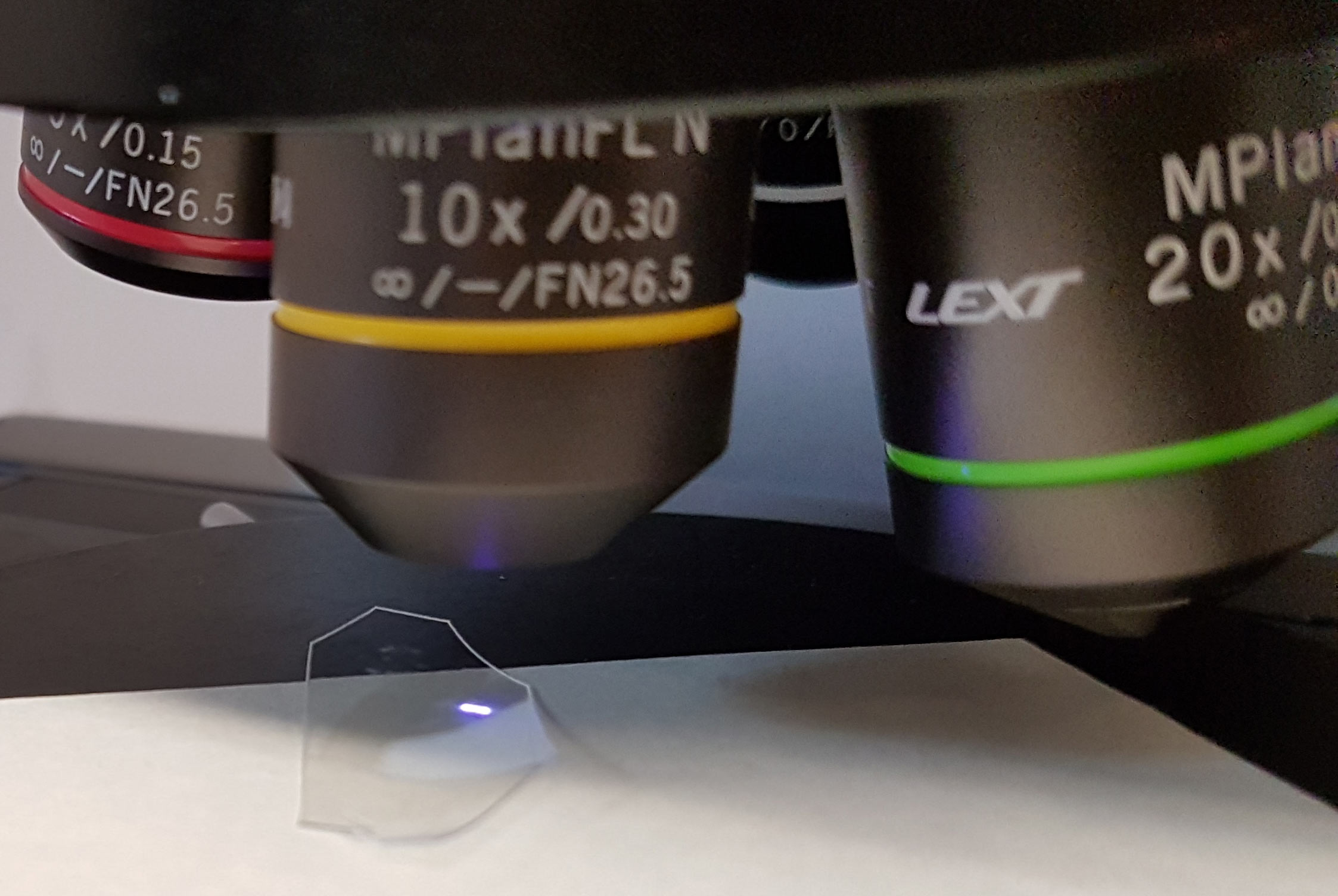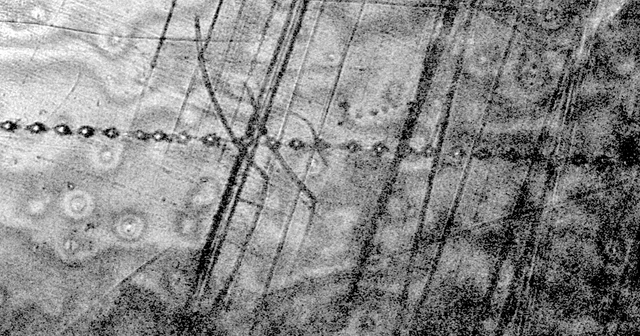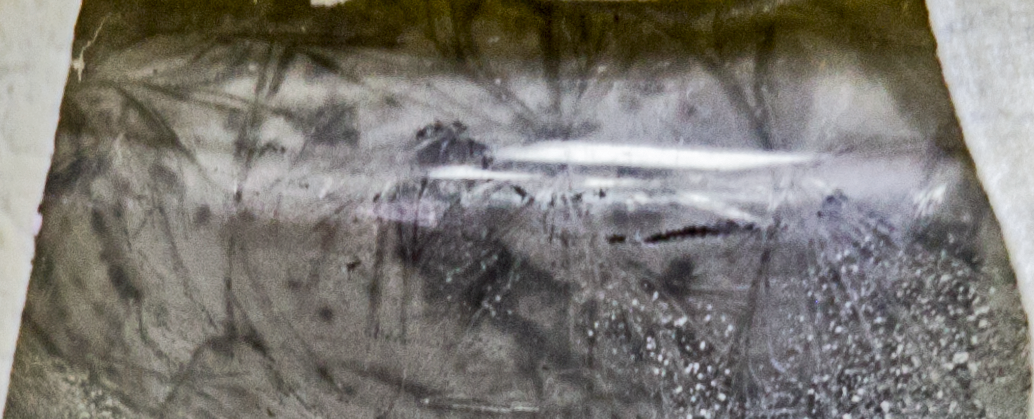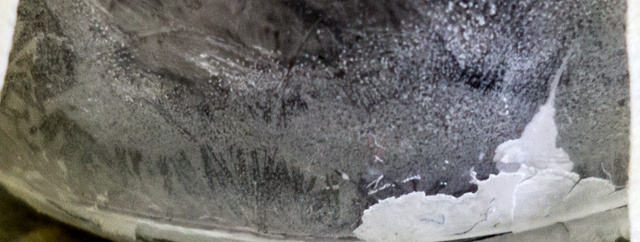ECCO - Looking for tachyons with laser microscopy
The search for 'strange radiation' re-visits the ECCO fuel sample that had been sitting on a 10" x 7" double 400ASA negative for many weeks now. The witness PET bottle bottom was removed, and yes, the damage was to the inside of the plastic. It was then taken to Masaryk University with a view to it being put under the SEM.
On arriving there, we were told that, since it was not conductive, it would have to be given a coating, say gold. Because this was going to be a somewhat destructive process, a request was made to use the Olympus Laser microscope instead first.

As a reminder, this fuel was processed for up to 200 hours with between 1.5 (single resonator) and 4.5kW (cross axis resonator) of 19.46kHz sound in light water medium by Suhas Ralkar. Thanks must be given to Suhas for sharing the sample.
It was the first time that the microscope was used in a while and there was little experience on hand, the sample was curved (which complicated things) and there was little time, but some interesting images were secured which are being made available here.
Download raw screen-grabs from the Olympus laser microscope by clicking here

Whilst the image above does not look conclusive, there are signs of repeating patterns in the tracks and so more time and a much more serious look is justified at varying magnifications using this technique. There are other images available, why not download them and see what you can see
Are there Tachyon / Strange Radiation tracks on the fuel container itself?

In the contrast adjusted image section above, it appears that the damage to the PET container has then been etched away - sometimes clean through. Note that the sample bottle has not moved at all since it was placed on the large format negative plate - no wonder Suhas' sample disintegrated in his hands! This bottle is likewise being ripped to shreds.
"Train Tracks"

In this contrast adjusted image section above, the dual tracks have seemingly zig-zag patterns joining them and they are quite consistent in width and feature periodicity, even though their direction is varied. Additionally, one might be able to notice little periodic spots of chemical encrustations that look as if they have bled through damaged PET.
It seems that getting a much better series of macro camera images of this fuel bottle could produce some nice geometry to study. Please download the raw images so far off the link below and see if you can find any interesting structures.
Congratulations @mfmp! You have completed some achievement on Steemit and have been rewarded with new badge(s) :
Click on any badge to view your own Board of Honor on SteemitBoard.
For more information about SteemitBoard, click here
If you no longer want to receive notifications, reply to this comment with the word
STOPImpressive, and super strange
THANKS FOR SHARING
While SEM and TEM images are so sexy to us materials geeks, the magic of optical microscopy ALWAYS gets to me!
Thanks for the beautiful images, and the speculation they're stirring up in my feeble brain.
The 'impact zones' are almost more interesting than the tracks, since they often have two spots - let's see if there is nothing similar on the control next week.
Looking to secure a good macro lens on Monday to get more detailed shot of the fuel container and perhaps, if the wet film developer is free, develop the negatives that have sat underneath.